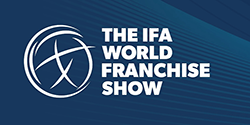10 Tips for Reading an FDD: Part 1, Tips 1-5

Part 1 of this 3-part series (Reading the FDD: The Argument Against Simplification) appeared in the previous issue of FLDR. The next part, “10 Tips for Reading an FDD,” begins here with the first 5 tips.
I offer the following 10 tips for reviewing an FDD — not as a do-it-yourself guide for franchise buyers, but to demystify the FDD. My top 10 list (not ranked by relative importance) offers guidance on how to make sense of a handful of specific FDD disclosure items that should help a franchise buyer figure out if pursuing a particular franchise opportunity is worth their time and money to move on to one of the final steps in the due diligence process: hiring franchise legal counsel.
1) Item 19 – Financial Performance Representation (FPR)
A franchisor that wishes to share any type of historical or forecasted financial results for its chain must do so in FDD Item 19. Otherwise, a franchisor must say in Item 19 that it does not make an FPR, which the law broadly defines as “any oral, written, or visual representation, to a prospective franchisee, including a representation in the general media, that states, expressly or by implication, a specific level or range of actual or potential sales, income, gross profits, or net profits.”
A franchisor violates the law by providing FPR data outside of the FDD – even if the data is truthful. A prospective franchisee who receives FPR data outside of the FDD should understand that this is not a sneak peek special advantage; it is a violation of the law and a warning sign that the franchisor may not value conventional standards of fair play in other areas of its business dealings. A franchise buyer should not rely on any statements by a representative of the franchisor about actual or projected sales, income, or profits made outside of the FDD.
FPR disclosures are the most important piece of information for a prospective franchisee to consider in making an investment decision. Yet, under applicable law, these disclosures are optional, not mandatory. Nevertheless, two-thirds of all franchisors today make some form of FPR disclosure because they know that qualified franchise buyers want this information.
There are many valid reasons why a particular franchisor might decline to make an FPR disclosure. It would be hasty to assume that a franchisor that declines to make an FPR disclosure is covering up a failing franchise network. Nevertheless, a recent study confirms that brands that make an FPR disclosure and are transparent about their system’s financial performance are overall better-performing systems and sell more franchises than those that decline to make one. Franchisors know, or should know, that their choice not to make an FPR disclosure places them at a competitive disadvantage in vying for qualified franchisee candidates.
The law requires a franchisor that makes an FPR disclosure to include this disclaimer without variation: “There is no assurance that you’ll [sell] [earn] as much.” The plain meaning of this government-mandated statement is not that the franchisee may not rely on the FPR disclosure in Item 19, but that the franchisor may not be held legally responsible if the franchisee’s actual results are not as good as those lawfully disclosed.
The law is very open-ended about what level of financial data a franchisor may share about its franchise network if it wishes to make an FPR disclosure, i.e., whether to confine published data to top-line sales or revenue or offer more elaborate information about profitability. The law only requires that a franchisor have a reasonable basis for the data that it does share; a legal standard that is not defined, but is understood to mean that the financial data disclosed must be truthful and based on operating conditions comparable to those that a prospective franchisee can reasonably expect to encounter.
A properly prepared FPR must explain the defining characteristics of the outlets that the FPR profiles so that a franchise buyer may determine what adjustments, if any, they should make in extrapolating the data for the geographic market in which they are considering operating a franchise. Whatever FPR data is disclosed should be regarded by a franchise buyer as a starting point for their own number-crunching. A candidate who is unsure if they can competently decipher the FPR data and prepare their own budget, breakeven, and cash flow analyses should engage a professional accountant for help.
A franchisor without an FPR may disclose the actual operating results of a specific “company-owned” outlet that it is offering for sale, but only to potential purchasers of that particular outlet. Active and former franchisees may also share their own financial results with candidates without implicating the franchisor in making an FPR, and the FDD includes their contact information. (See Tip 4, below).
In my experience, most current and former franchisees consider their financial results to be too competitively sensitive to share with strangers. They may offer franchisee buyers some insight into expense data by explaining expenses as a percentage of their top-line revenue, but existing franchisees are not likely to reveal data points expressed in dollars.
Franchisors may not direct prospects to their top performers and away from poor performers or malcontents. A prospective franchisee should not consider it a favor if a member of the franchisor’s management or business broker tells them which franchisees to speak with for FPR answers, claiming to be saving them from having to cull through long franchisee rosters on their own.
2) Item 20 — Franchise Network Statistics
Item 20 has five tables that track the growth of the franchise network over the franchisor’s last three fiscal years (or shorter time in business) and reveal if franchisees who sign a franchise agreement actually open and stay in business. Most of the information is self-explanatory with respect to growth trends. Table 3 discloses franchisee turnover rates, which may be a sign of a troubled franchise system. Table 5 discloses the number of franchise agreements signed for outlets not yet opened as of the FDD’s disclosure date; a large number may denote a franchisor content with signing new franchise agreements and taking initial fees without helping franchisees actually open for business.
The Item 20 tables will not disclose the number of multi-outlet or area development agreements signed by franchisees, or the number of outlets that franchisees who sign these contracts pledge to open by specific deadlines. Nevertheless, media sources, franchisors, and business brokers often tout these statistics as evidence of a growing franchise network. It is unlawful for a franchisor to include pledged outlets in any Item 20 table unless the franchisee has signed a specific franchise agreement for the unit. A franchise buyer should judge a system’s success not by the number of pledged outlets but by the percentage of pledged outlets that actually open for business within the time that Item 11 discloses it should take a franchisee to open. A franchise buyer should ask the franchisor about the history and timeline for pledged-to-opened outlets in investigating the franchise opportunity.
Finally, Item 20 discloses contact information about any trademark-specific and independent franchisee association that asks to be identified in the FDD, typically excellent sources of candid feedback about the franchise network.
3) Item 7— Estimated Startup Costs
Item 7 lays out a low/high estimate for the various components of a franchisee’s startup costs to open and operate a franchise outlet from the date the franchisee signs the franchise agreement through the end of the outlet’s third month in business. A franchise buyer should plan to spend the high estimate. When it comes to interpreting the “Additional Funds” category, buyers must make sure they understand the franchisor’s assumptions for the most expensive cost categories like real estate, labor, and cost of goods sold.
A properly written Item 7 should be annotated with footnotes that explain the variables influencing expenses such as market and venue characteristics, the typical square footage of a retail location, and staff size. Franchisors are not required to disclose real estate costs if they cannot realistically estimate them, but then Item 7 must affirmatively state that estimated real estate costs are excluded from Item 7, in which case a franchise buyer must plug in their own numbers to create a proper budget.
A franchise buyer should interview the franchisor about the Item 7 assumptions, especially if Item 7 lacks robust footnotes, as well as factor in other cost categories besides rent that a franchisor may exclude from Item 7 such as continuing fees (disclosed in Item 6), loan costs, vehicle costs to support franchise operations (often overlooked), local wage rates, and money a franchisee needs to live on during the startup period. Validating Item 7 estimates against the actual experience of existing and ex-franchisees is essential. (See Tip 4).
4) FDD Exhibits with Franchisee Contact Information
Franchise disclosure rules require franchisors to include an FDD exhibit with contact information for every active franchisee and ex-franchisee who left the franchise system during the past year. This disclosure offers no benefit to a franchisor’s earliest adopters who buy a franchise before any franchised outlets have a few months of operating experience under their belt, but for every other franchise buyer, these rosters facilitate due diligence outside of the FDD and the validation of FDD disclosures.
A franchise buyer should contact a diverse cross-section of active and former franchisees (e.g., single-unit franchisees, multi-unit franchisees, conversion franchisees, franchisees that just recently opened for business, veteran franchisees in business for a while, franchisees in the same state or market as the franchise buyer, franchisees in distant geographies in the U.S., and franchise owners who operate other franchise concepts) to explore if they have common things to say about their experience with the franchisor and brand.
Among the many subjects worthy of discussion, a franchise buyer should ask franchisees about: 1) both the quality of the support they received in getting their outlet opened, and the relevance and quality of initial and ongoing marketing and training — and whether these services match what FDD Item 11 says the franchisor will deliver; 2) the franchisor’s commitment to competitive innovation and how the franchisor tests program changes or seeks franchisee feedback before rolling them out; 3) the frequency and quality of the franchisor’s engagement with the franchisee community, and if franchisee input is welcomed; 4) validation of Item 7 initial investment estimates; 5) validation of any Item 19 disclosure; and 6) the general temperature of franchise relationships. Interviewing ex-franchisees is important, but a franchise buyer should expect some may have a personal axe to grind. What is important is if there is a pattern of complaint.
5) Item 12 — Territory
Item 12 discloses if the franchisor assigns a franchisee a territory within which it agrees not to assign a second franchisee. Some franchise programs are site-specific, meaning the franchisor may cluster franchises as close to one another as it wants regardless of whether they cannibalize each other’s sales.
If a franchisor awards a territory, the franchisor must disclose if it may: 1) change territorial boundaries unilaterally with or without cause; 2) sell authorized goods and services at certain types of venues in the franchisee’s territory (e.g., shopping malls, stadiums, schools, airports, entertainment centers); or 3) sell authorized goods and services through alternative distribution channels that may compete with the franchisee for business (e.g., grocery stores, online) and, if so, whether it will share revenue from these activities with the local franchisee.
Territorial rights are often misunderstood. If they are granted, they typically pertain to the density of branded outlets or franchisee services providers measured by distance or population size. They do not purport to give a franchisee exclusive access to customers within a particular geography nor are they necessarily drawn to approximate a franchised business’s market within which it will draw its customers.
Territorial rights typically are punctured by the franchisor’s reserved right to operate in nontraditional venues and distribution channels that require centralized management, something that unrelated franchise owners cannot match. A franchise buyer should appreciate that having the franchise brand represented in nontraditional and captive venues such as an airport, stadium, and even a mall, can inure to their benefit by functioning as a billboard for the brand. The franchisee’s retail location typically does not compete for the same customers who frequent alternative venues and buy from alternative channels that the franchisor reserves for itself. However, by conducting pre-sale interviews with existing franchisees (Tip 4), a franchise buyer should be able to discern if a franchisor is engaged in opportunistic encroachment practices.
Next time: Tips 6–10.
Rochelle Spandorf is a partner with Davis Wright Tremaine and chairs the firm’s franchise practice. She is a nationally recognized business franchise and distribution attorney representing franchisors, manufacturers, licensors, suppliers, franchisees, and distributors in their domestic and international expansion and strategic development. She has the distinction of being the first woman to chair the ABA Forum on Franchising, the nation’s preeminent association of franchise attorneys, and is recognized by her peers as a Global Elite Thought Leader in franchise law. Contact her at [email protected] or 213-633-6898.
Share this Feature
Recommended Reading:
FRANCHISE TOPICS
- Multi-Unit Franchising
- Get Started in Franchising
- Franchise Growth
- Franchise Operations
- Open New Units
- Franchise Leadership
- Franchise Marketing
- Technology
- Franchise Law
- Franchise Awards
- Franchise Rankings
- Franchise Trends
- Franchise Development
- Featured Franchise Stories
FEATURED IN

Franchise Update Magazine: Issue 3, 2021








 The franchise listed above are not related to or endorsed by Franchise Update or Franchise Update Media Group. We are not engaged in, supporting, or endorsing any specific franchise, business opportunity, company or individual. No statement in this site is to be construed as a recommendation. We encourage prospective franchise buyers to perform extensive due diligence when considering a franchise opportunity.
The franchise listed above are not related to or endorsed by Franchise Update or Franchise Update Media Group. We are not engaged in, supporting, or endorsing any specific franchise, business opportunity, company or individual. No statement in this site is to be construed as a recommendation. We encourage prospective franchise buyers to perform extensive due diligence when considering a franchise opportunity.